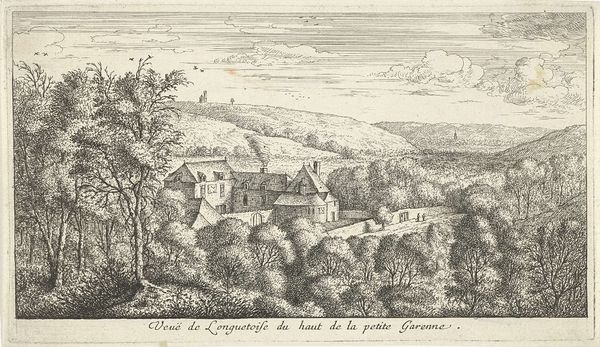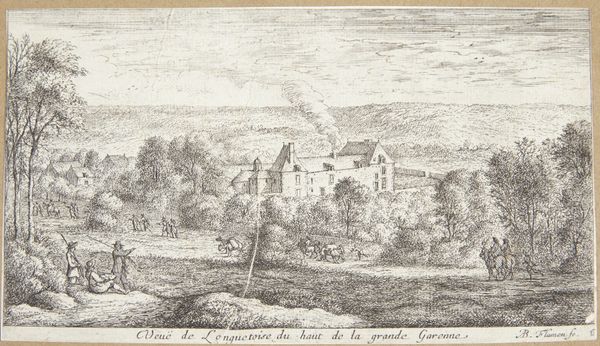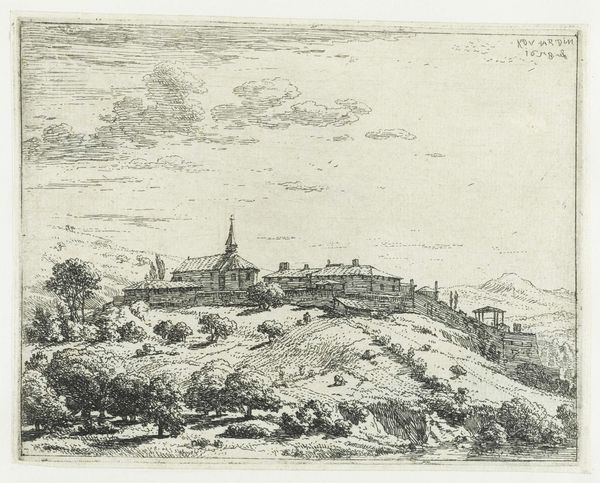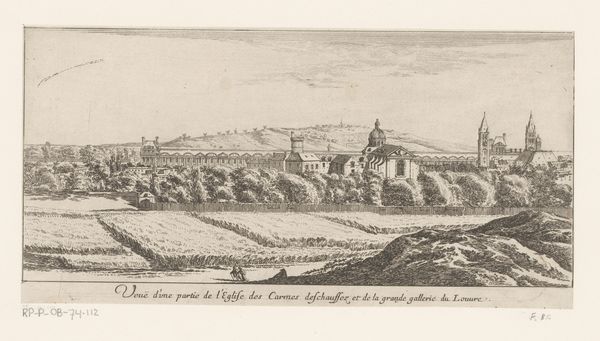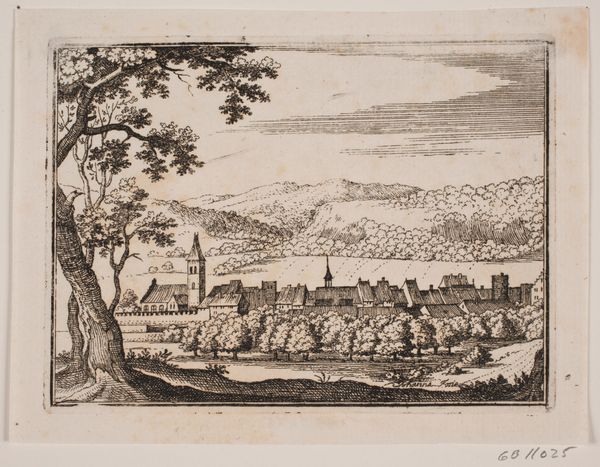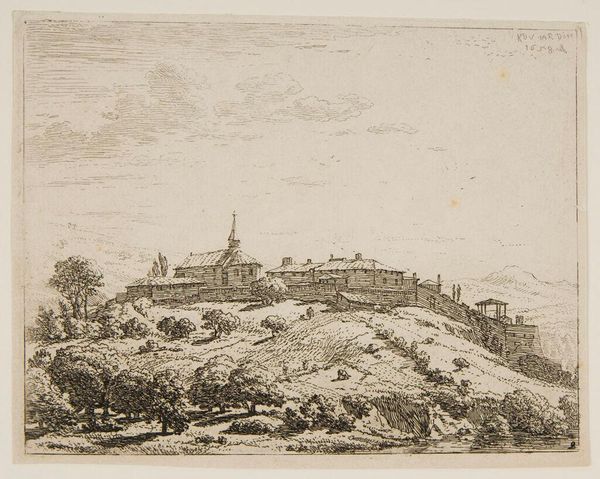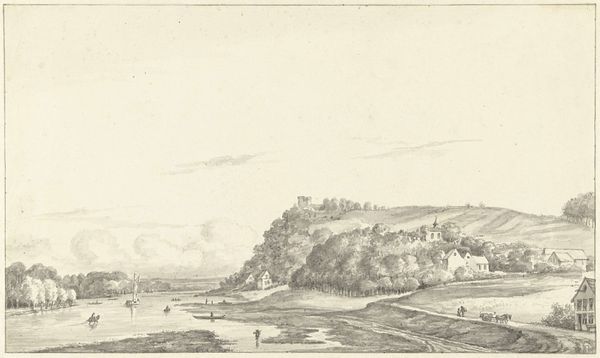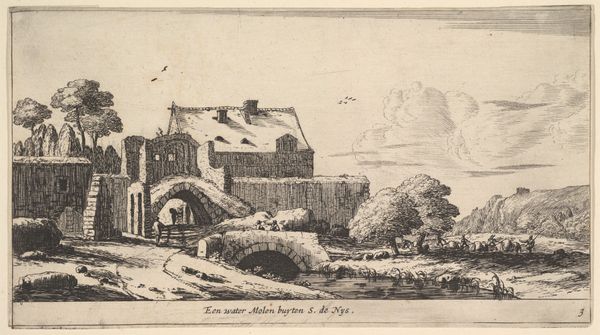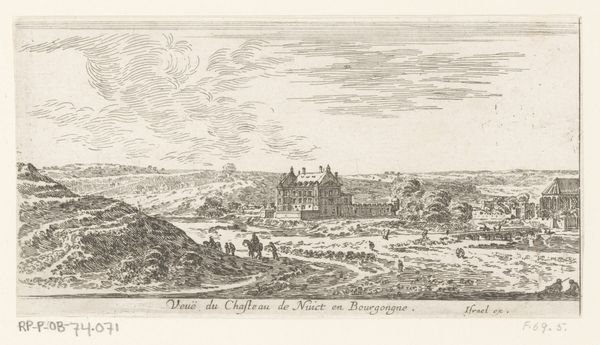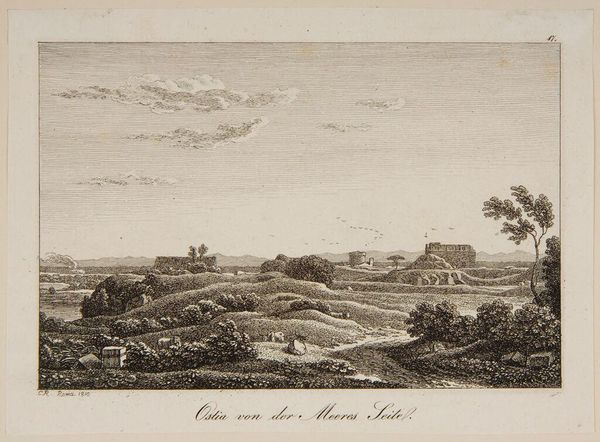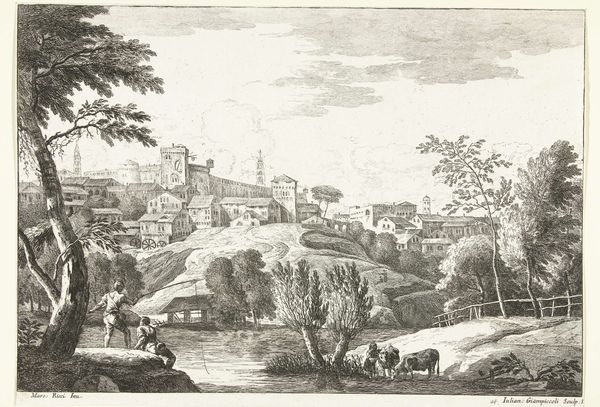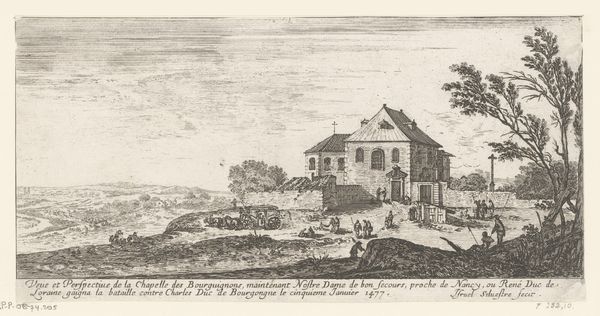
print, etching
#
baroque
# print
#
etching
#
landscape
Dimensions: 115 mm (height) x 206 mm (width) (bladmaal)
Curator: This is "Udsigt over la petit Garenne nær Longuetoise," or "View of la petit Garenne near Longuetoise," an etching by Albert Flamen dating sometime between 1620 and 1669. It’s currently held here at the SMK, Statens Museum for Kunst. Editor: The first thing that strikes me is its intimacy. It’s so detailed, and yet so serene. You feel invited into this quiet little valley, like you're witnessing something private. Almost as if someone found this and thought, I'm going to try and freeze frame it as a forever experience. Curator: Absolutely, and thinking about the ‘means of production’ here, we can consider the labor of etching. Flamen likely would have coated a metal plate with wax, scratched his design through it, and then submerged the plate in acid. That process gets at the intimacy you observed; a long, arduous labor results in something apparently effortlessly scenic. Editor: True, it's a labor of love—etching captures nuances you just don't get with bolder strokes, isn’t it? I see the fine lines defining the leaves and the subtle gradients suggesting depth... It gives me such joy that his focus isn't so much to render nature exactly as he sees it, but maybe with what that particular space means for him as well. It’s almost playful! Curator: Well, considering its likely patronage, prints such as these often functioned as documents of land ownership. This wasn't only about artistic expression; this print potentially communicated socio-economic status. This is also during a time of land expansion by the bourgeoise, who would have commissioned landscapes like this to mark territory and economic power. Editor: It's a gentle landscape though. It reminds me of the Shire in Tolkien's Middle-earth, somewhere to have second breakfast. Does that connect, somehow, to this assertion of power, to make it such a homey and comforting kind of aesthetic experience? Curator: It certainly does present a paradox. By portraying the land as idyllic and fertile, it disguises the more complex realities of ownership and labour involved in its production and maintenance. It highlights the visual markers of property whilst masking, as it were, the ‘process’. Editor: Hmm, masking the process… I think I understand. Next time I visit, I will try to connect not only the emotion from a work, but perhaps think as well, who, and what, made it a possibility? Curator: I will leave seeing the Shire in its lines for others to discern, but this consideration of both form and context makes the artistic experience more relevant to our society.
Comments
No comments
Be the first to comment and join the conversation on the ultimate creative platform.
